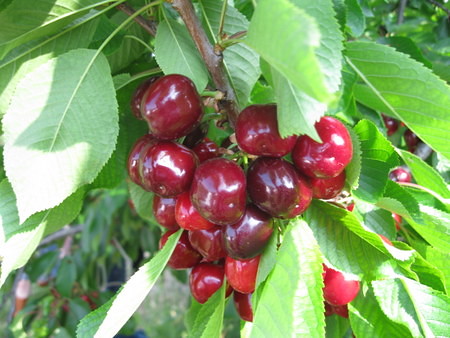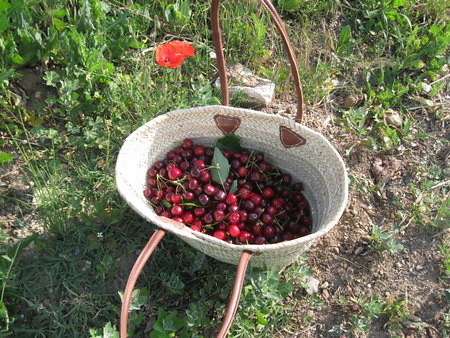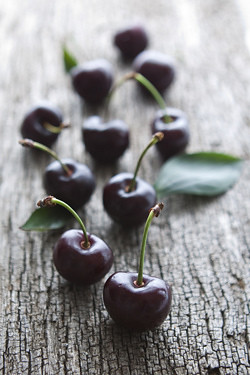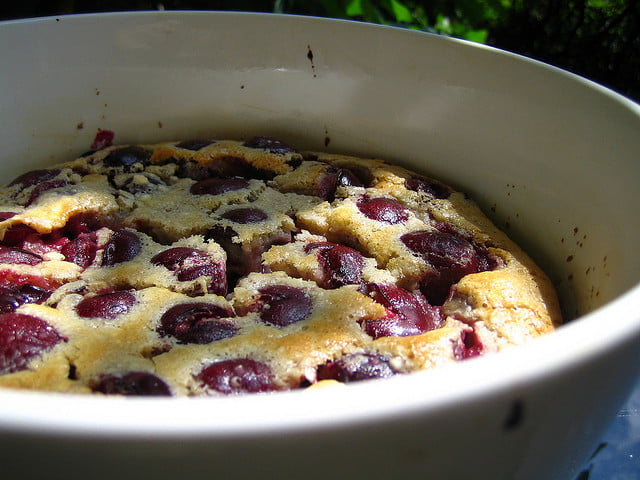Cherry picking in the south east of France
Cherries – the botanical name is Prunus cerasus – have always been part of our diets.
In the 15th Century, the crushed stone of the cherry was prescribed for stomach and chest problems. The stems of the cherry were made into tea to treat bronchitis, and eating six whole cherries a day was thought to prevent kidney stones.
Cherries contain the most sugar of all red fruit, and provide both vitamin C and the provitamin A. Modern nutritionists believe that the antioxidants found in the skin of the fruit have important health benefits.
But when I think of cherries, the ‘benefits’ I consider are the beauty of the blossom and the glory of the taste. Cherry blossoms dot the landscape of the Luberon region of Provence in early spring, and by late May or early June the trees branches are weighed down by the bright fruit.
The area offers 300 days of sunshine a year, which is ideal. The trees are planted strategically on the hillsides, exposed to the sun but protected from the Mistral winds. Cherries became especially important in the late 19th century when phylloxera ravaged the grape vines and many farmers converted to cherry cultivation.
As I walked through my market this week, I saw overflowing baskets of the hand-picked fruit in every market stall.
The harvest began in late May with the Burlat cherry – a plump, deep-red varietal that are the first to ripen. Next on the market are the Summit, which are fleshy and in the shape of a heart.
The Monts de Venasque are the last to be harvested and close the season at the beginning of July. The village of Venasque even has a ‘Confrérie de la Cerise’ or the ‘Brotherhood of Cherries’ and celebrate the fruit at the Festival de la Cerise. The Festival brings the producers to Venasque, and visitors can taste their way through the village and pick up some tips and various recipes.
Today the Luberon region has over 800 producers but not all the fruit is for immediate consumption. Some is candied in the city of Apt, known for its candied fruit industry.
The candied fruit business began when the Popes settled in Avignon in the 1300s. Dozens of confectioners set themselves up in the heart of this region to transform fresh fruit into candied fruit that could be eaten year round, or used in baked goods and other sweets.
The cherries are treated in the same way today: de-stoned and then candied by replacing their water content with sugar.
My favorite cherry desert is clafouti, a flan-like dessert with fresh cherries. Below is my family recipe, with all the variations and changes in method that every family acquires over time.
Clafouti with Pistachios
¾ cup heavy cream
¾ cup milk
½ cup sugar
3 eggs
1/3 cup all-purpose flour
½ teaspoon almond extract
1 pound or more of pitted cherries
¼ cup unsalted pistachios
- Put all but the cherries and nuts in bowl and blend until smooth.
- Butter and lightly flour a shallow pan.
- Put cherries in the pan so that they completely cover the bottom and pour batter over them.
- Scatter with nuts.
- Bake in 175oC oven for 40 minutes.
- Leave to cool.
If you are lucky enough to have any left over, it is delicious cold for breakfast.
1. & 2. Laurence Bry
3. Cherries, by Mowie Kay on Flickr
4. Cherry Clafoutis, by Holy Gadzooks on Flickr











The cherries this season are fantastic! My husband & I can’t get enough!